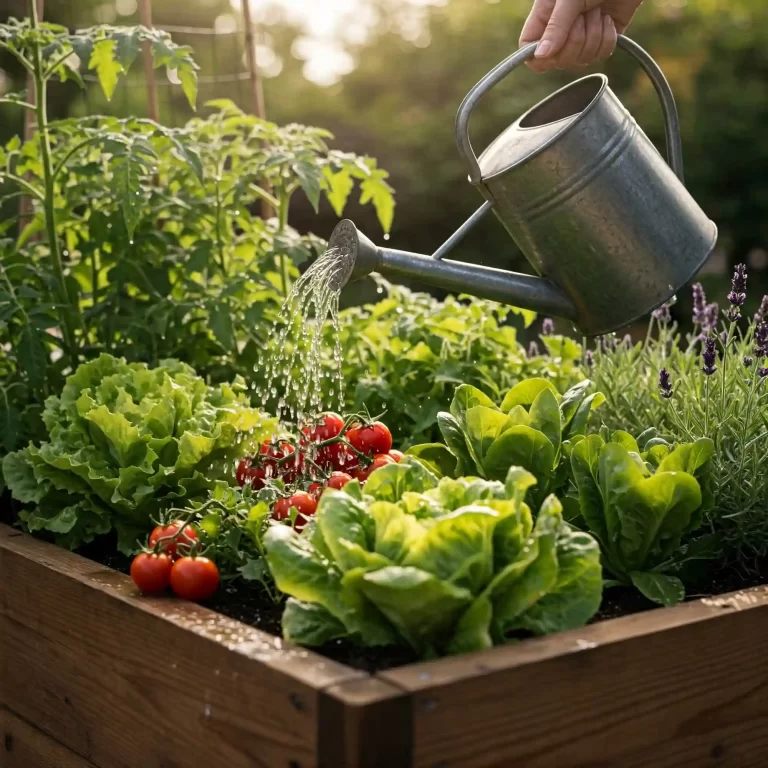Raised garden beds have become increasingly popular due to their numerous benefits. They offer better soil drainage, easier accessibility, and improved yields. However, creating a sustainable raised garden requires careful planning and implementation of sustainable practices. Here are 20 sustainable raised garden practices to help you build and maintain a thriving garden:
1. Choose the Right Materials
Select raised garden bed materials that are durable, sustainable, and eco-friendly. Consider using recycled plastic, untreated wood, or metal beds. Avoid pressure-treated wood, as it can leach chemicals into the soil.
2. Plan Your Garden Layout
Design your raised garden beds to maximize space and sunlight. Consider the size, shape, and orientation of the beds to ensure all plants receive adequate sunlight and air circulation.
3. Build the Raised Beds
Construct the raised beds according to the chosen materials and design. Ensure the beds are sturdy and well-supported to withstand the weight of the soil and plants.
4. Use Organic Soil
Fill the raised beds with organic soil or a mixture of compost, peat moss, and perlite. Organic soil provides essential nutrients for plant growth and improves soil structure.
5. Compost Kitchen Scraps
Compost your kitchen scraps, yard waste, and paper products to create nutrient-rich compost. Add compost to the raised beds to improve soil fertility and water retention.
6. Practice Crop Rotation
Rotate crops each season to prevent soil depletion and pest infestations. Crop rotation helps maintain soil health and reduces the risk of diseases.
7. Use Companion Planting
Plant compatible plants together to benefit from their mutual growth and pest control properties. Companion planting can enhance yields and overall garden health.
8. Mulch Your Garden
Apply a layer of mulch, such as straw, leaves, or compost, to the surface of the raised beds. Mulch helps retain moisture, suppress weeds, and improve soil structure.
9. Water Efficiently
Water your raised garden beds deeply and infrequently to encourage deep root growth. Drip irrigation systems can help reduce water usage and target specific plants.
10. Practice Integrated Pest Management
Implement integrated pest management techniques to control pests and diseases naturally. This includes using beneficial insects, companion planting, and organic pest control methods.
11. Use Organic Fertilizers
Fertilize your raised garden beds with organic fertilizers, such as compost tea, fish emulsion, or manure. Organic fertilizers provide slow-release nutrients and improve soil health.
12. Attract Beneficial Insects
Plant flowers and herbs that attract beneficial insects, such as bees, butterflies, and ladybugs. Beneficial insects help pollinate plants and control pests.
13. Build a Raised Bed Cover
Create a raised bed cover using a cold frame or cloche to protect plants from frost, wind, and excessive heat. This helps extend the growing season and improve yields.
14. Maintain Soil Health
Regularly test the soil pH and nutrient levels in your raised garden beds. Adjust the soil pH and add organic matter as needed to maintain optimal soil health.
15. Practice Succession Planting
Plant different crops in succession to ensure a continuous harvest throughout the growing season. This helps maximize garden space and yields.
16. Encourage Pollinators
Provide a water source and nesting areas for pollinators, such as bees and butterflies. Pollinators are essential for fruit and vegetable production.
17. Use Vertical Gardening
Incorporate vertical gardening techniques, such as trellises, hanging planters, or stacked planters, to maximize garden space and grow more plants in a limited area.
18. Grow Heirloom Seeds
Choose heirloom seeds over hybrid seeds. Heirloom seeds are open-pollinated and can be saved and replanted each season, reducing the need to purchase new seeds.
19. Practice No-Dig Gardening
Adopt no-dig gardening techniques to minimize soil disturbance and preserve soil structure. Use organic matter and compost to improve soil health without digging.
20. Experiment and Learn
Experiment with different gardening techniques, plant varieties, and sustainable practices to discover what works best for your raised garden. Keep a gardening journal to document your experiences and successes.
By following these sustainable raised garden practices, you can create a thriving and productive garden that is in harmony with the environment
